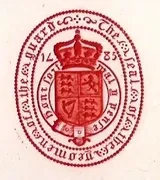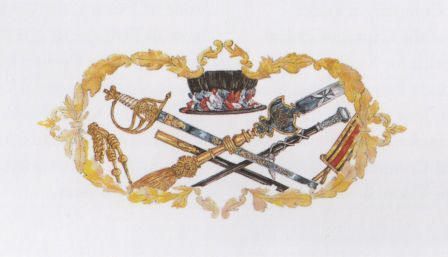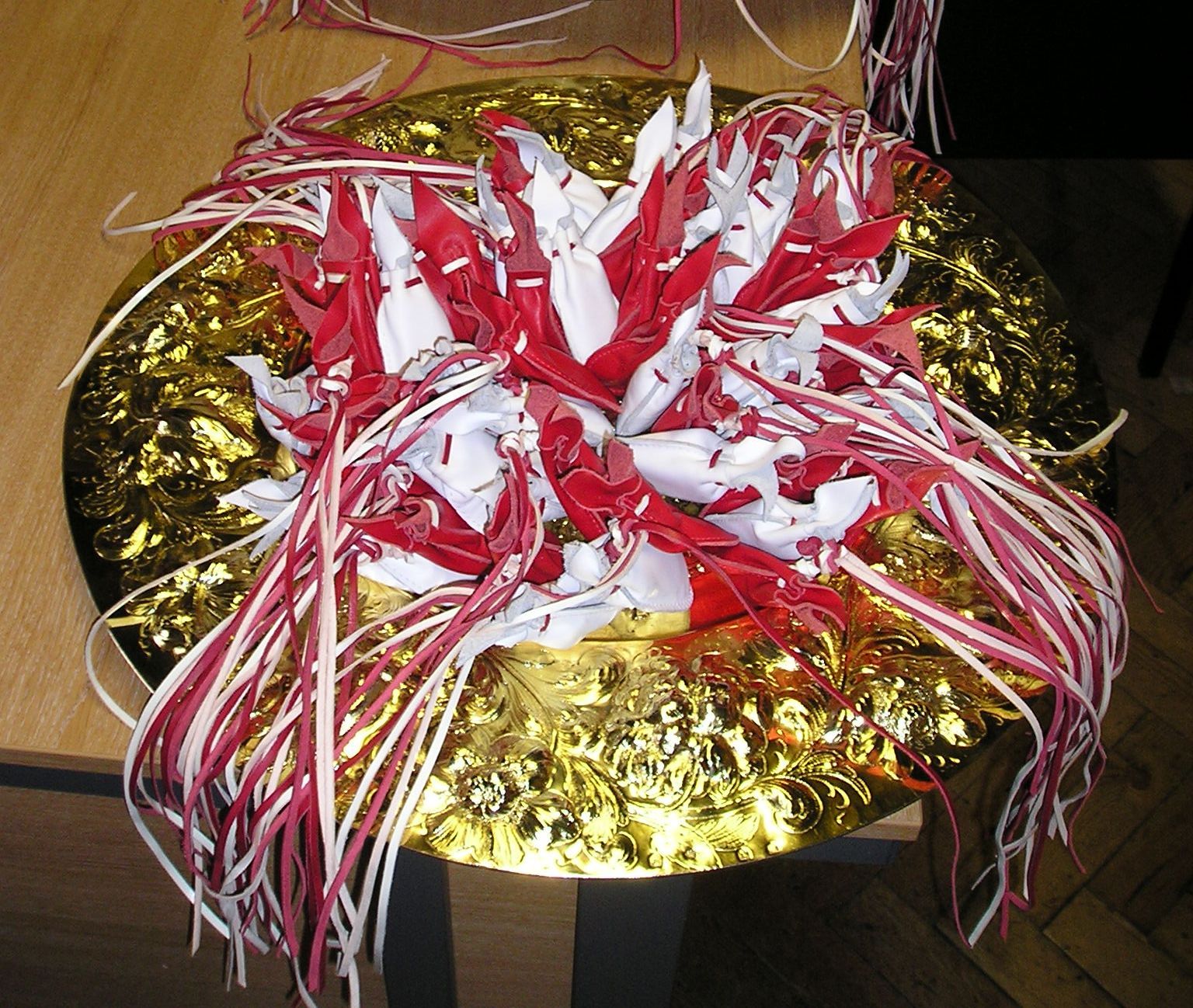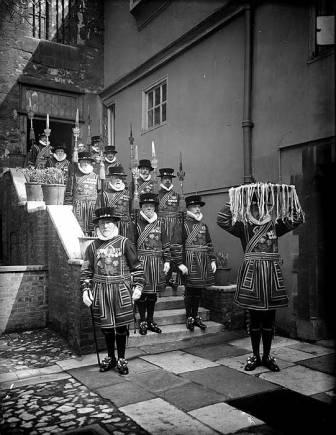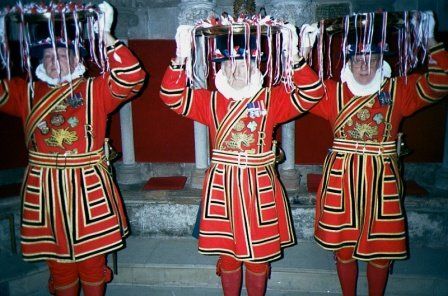The distribution of alms and the washing of the feet on the Thursday of Holy Week are of great antiquity. The Royal Maundy can be traced back in England with certainty to the twelfth century, and there are continuous records of the distribution having been made on Maundy Thursday from the reign of King Edward I. The service derives its name from the Latin word 'mandatum' meaning a commandment, and its opening words are 'Jesus said: "I give you a new commandment".
From the fifteenth century the number of recipients has been related to the Sovereign's age. At one time recipients were required to be of the same gender as the Sovereign, but since the eighteenth century they have included men and women. Recipients are pensioners selected because of their service to the Church and their community. The distribution is in two parts, the gifts which are handed to the recipients are symbolic and highly prized.
The red purse contains an allowance for clothing and provisions formerly given in kind and a payment for the redemption of the royal gown. The white purse contains Maundy coinage; a quantity of silver pennies in denominations one-pence, two-pence, three-pence and four-pence, to as many pence as the Sovereign has years of age. Maundy coins are legal tender, and when the United Kingdom changed to decimal currency in 1971, the face value of a set of four coins became 10 new pence, instead of 10d (pence) in the £sd system (£=pounds, s=shillings, d=pence).
